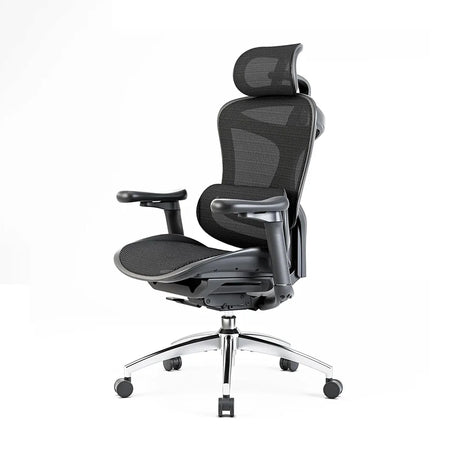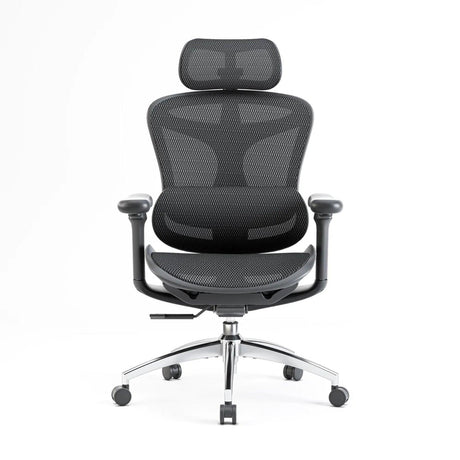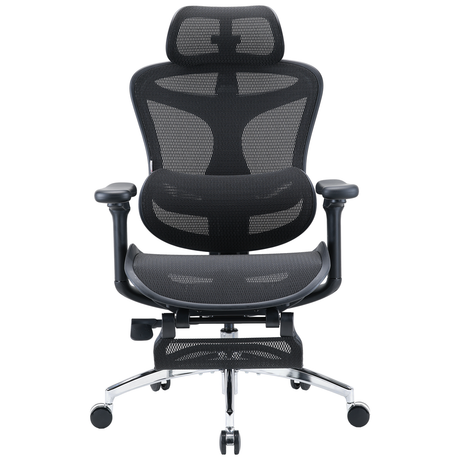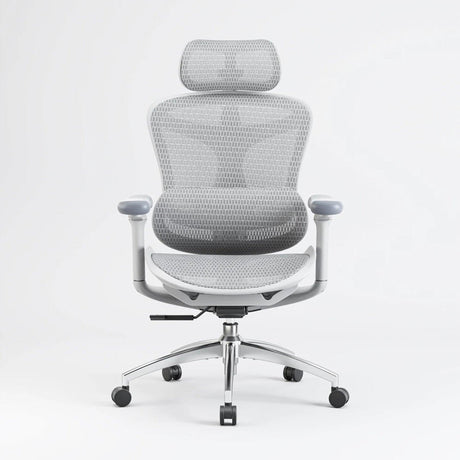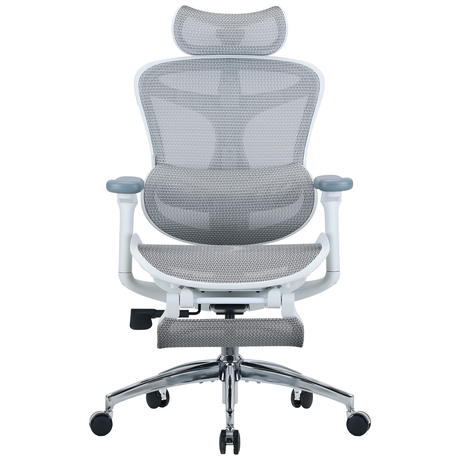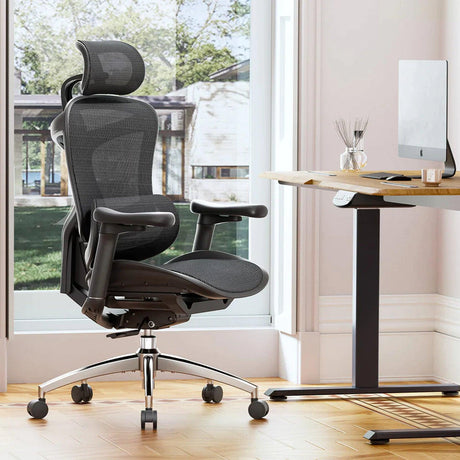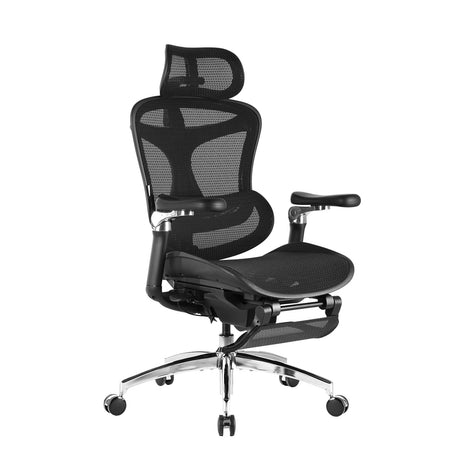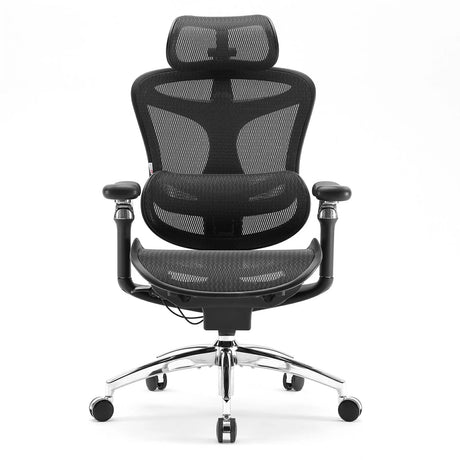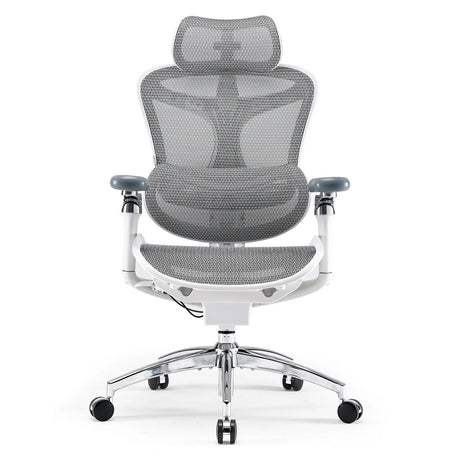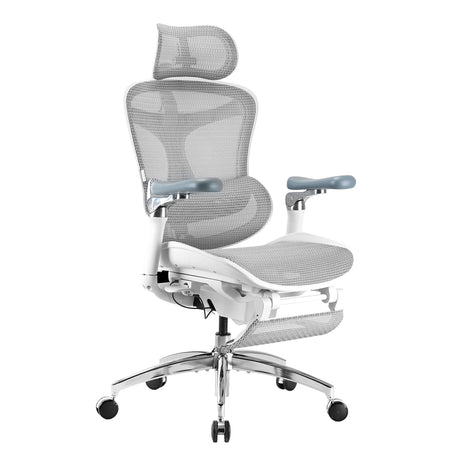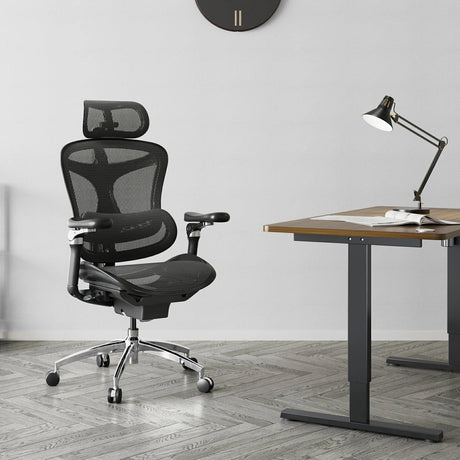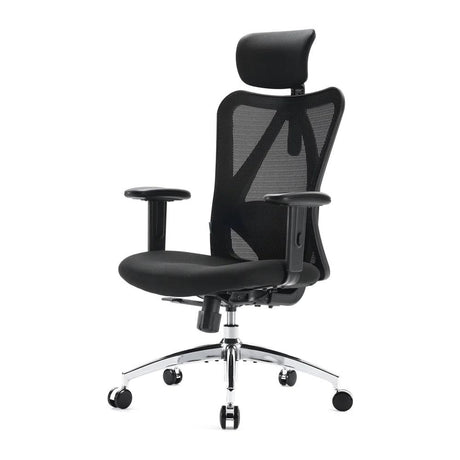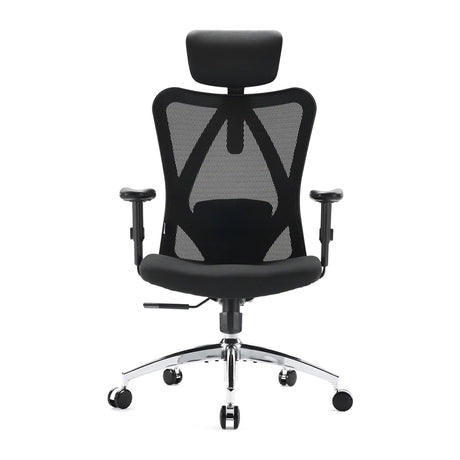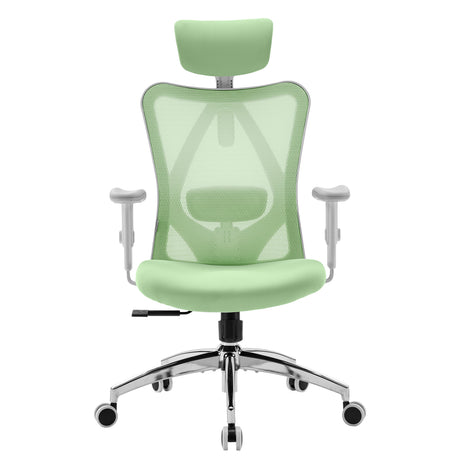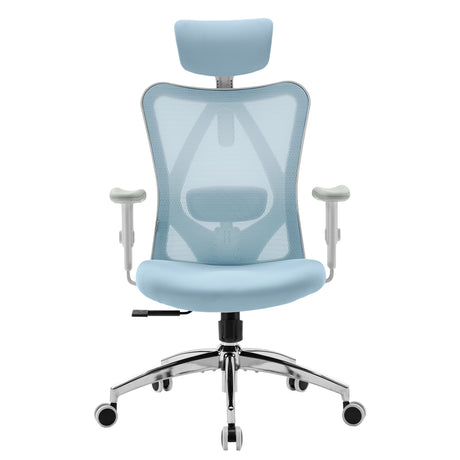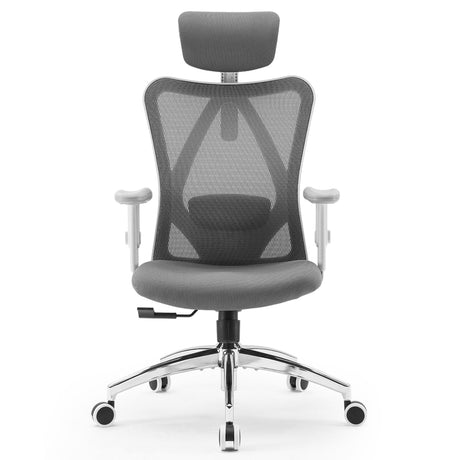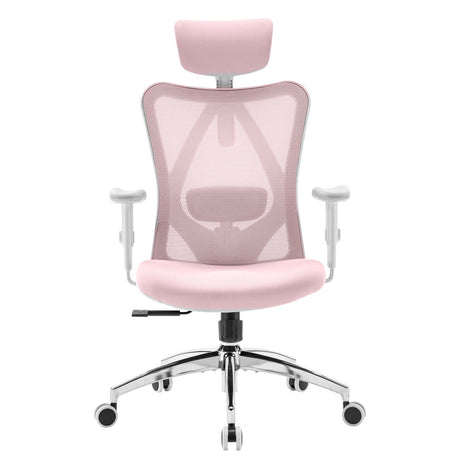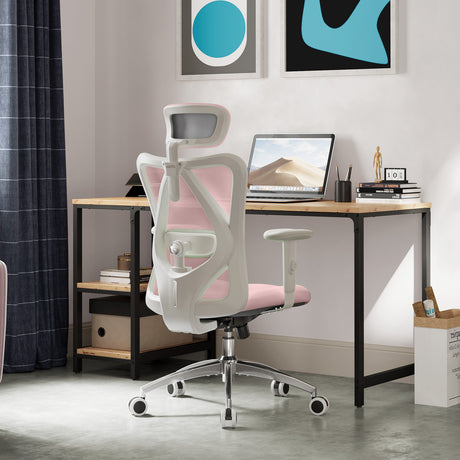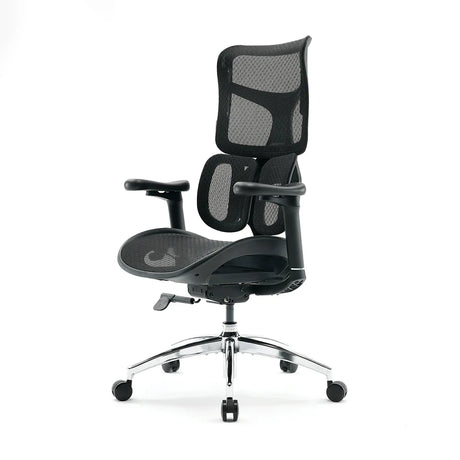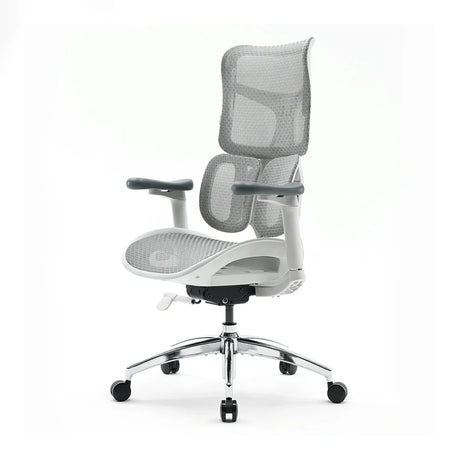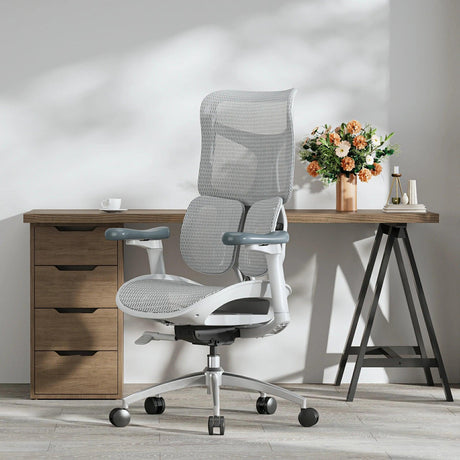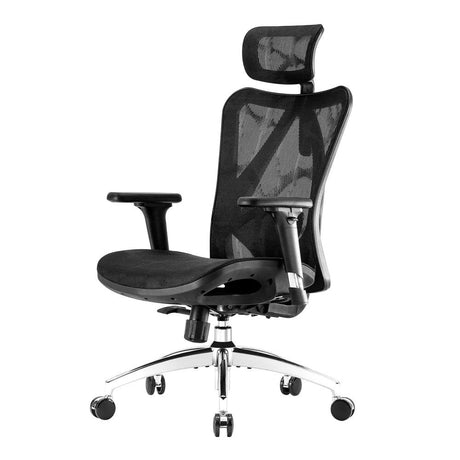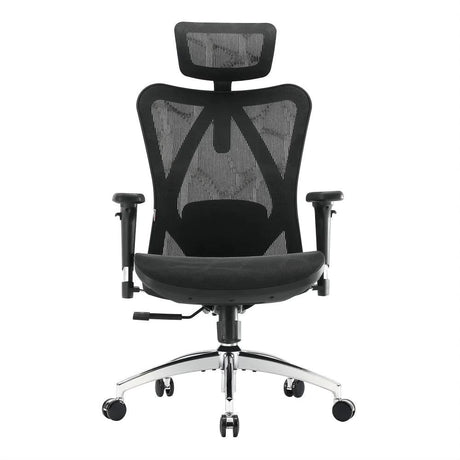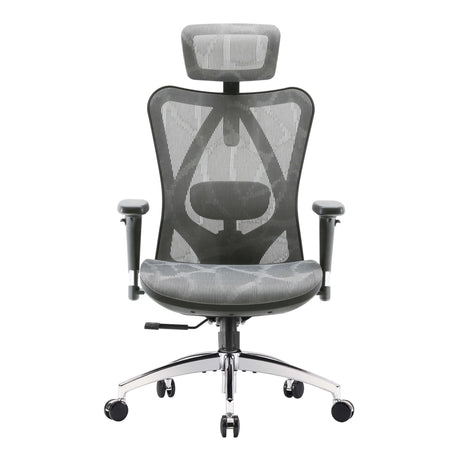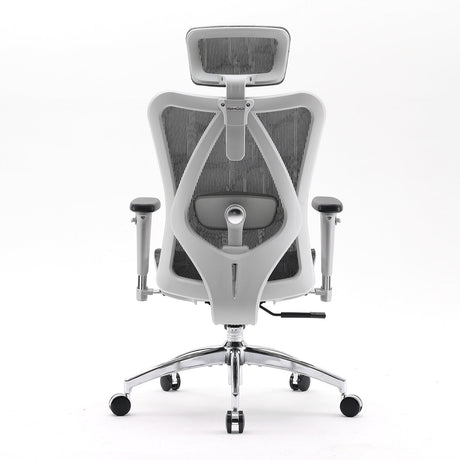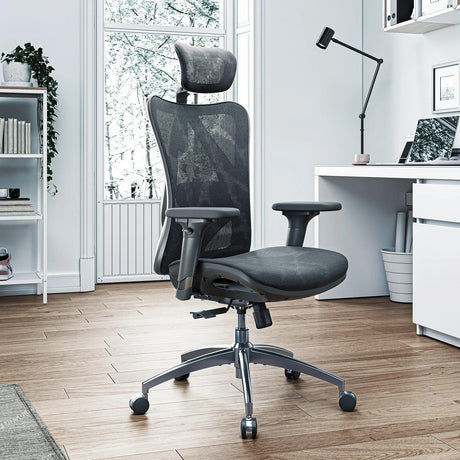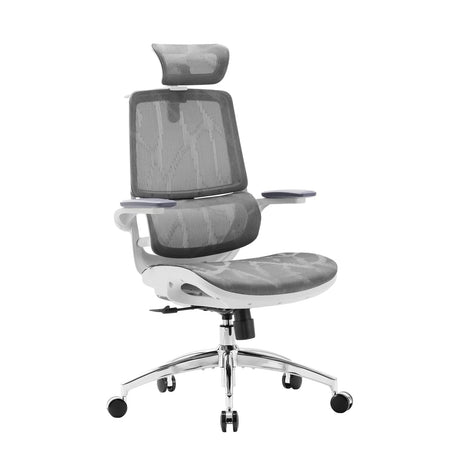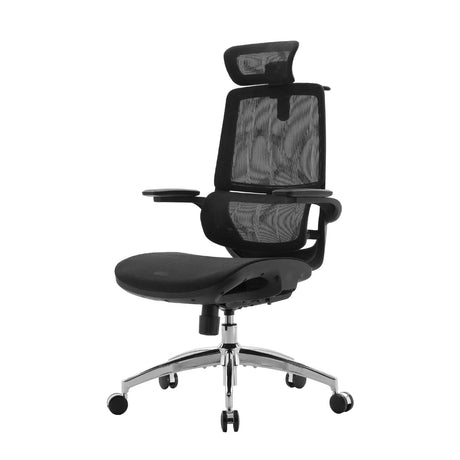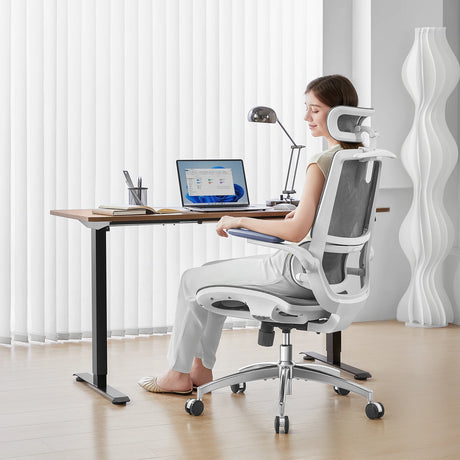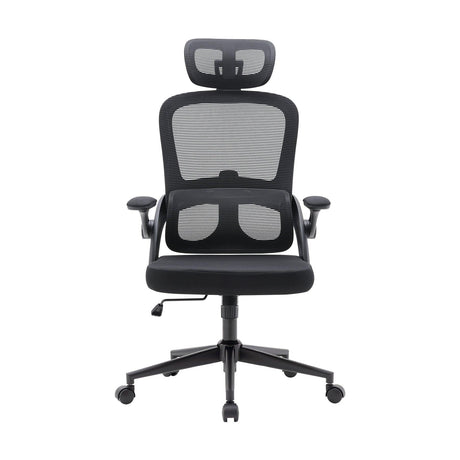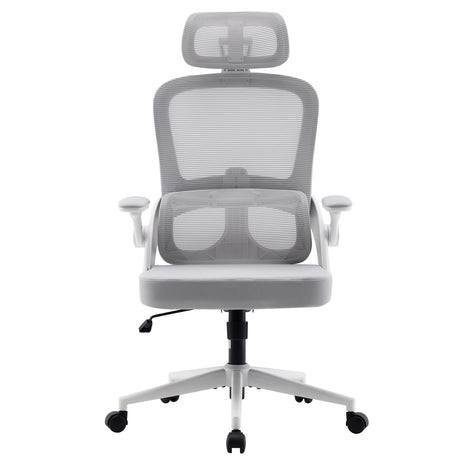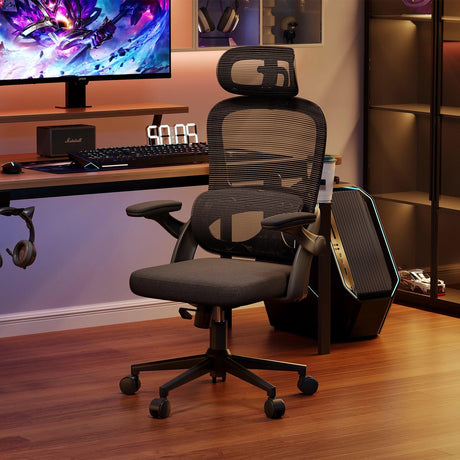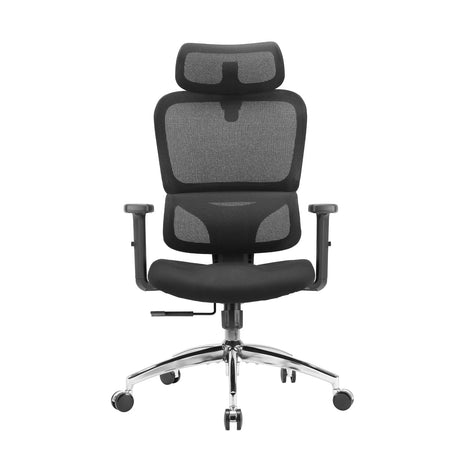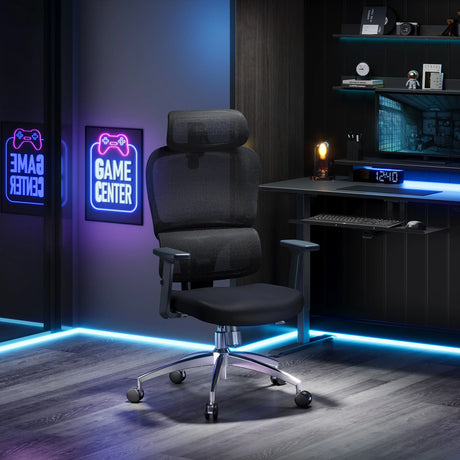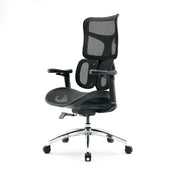When it comes to choosing an ergonomic office chair, one often-overlooked detail can make a world of difference: the height of the armrests. We often spend hours researching seat depth, lumbar support, or backrest recline—but the armrests? They sometimes get neglected, even though they directly impact shoulder comfort, wrist positioning, and overall posture.
The truth is simple: armrests that are too high or too low can cause pain, strain, and even long-term injury. But when they’re positioned just right? They act like small but mighty tools for improving comfort, productivity, and even health.
So, what is the appropriate height for the armrests of an ergonomic office chair? Let’s dive deep into the topic, break down the science, and help you find that “just right” position for your arms and shoulders.
Why Armrest Height Matters
If you’ve ever worked at a desk with poorly adjusted armrests, you’ve probably felt it—tight shoulders, tingling fingers, maybe even a dull ache in your neck. This is not just discomfort; it’s a sign that your upper body alignment is off.
Here’s why armrest height is critical:
-
Shoulder & Neck Health
When armrests are too high, your shoulders shrug upward, causing tension in your neck and trapezius muscles. Too low? Your arms dangle, leading to increased strain on your shoulders as they try to support the weight of your arms. -
Wrist & Elbow Positioning
Properly set armrests help keep your wrists in a neutral position when typing or using a mouse, reducing the risk of carpal tunnel syndrome or repetitive strain injuries (RSIs). -
Posture Support
The right armrest height encourages you to sit back in your chair instead of leaning forward, maintaining spinal alignment and engaging your lumbar support effectively. -
Fatigue Reduction
By allowing your arms to rest, you relieve your upper body from having to hold them in mid-air. This translates into less energy wasted and fewer aches after a long day.
In short, armrest height isn’t just about comfort—it’s about preventing musculoskeletal problems that can impact your daily life and career.
The Ideal Armrest Height: The Goldilocks Zone
So, what’s the “just right” height?
The appropriate armrest height is one where your elbows bend naturally at a 90- to 100-degree angle, your shoulders are relaxed (not raised or slouched), and your wrists remain straight while typing.
This might sound simple, but it depends on several factors:
- Your body height (taller people need higher armrests, shorter people need lower ones)
- Desk height (armrests must align well with your work surface)
- Chair type (some ergonomic chairs offer 4D–6D adjustable armrests, allowing you to fine-tune not only height but also width, depth, and angle)
A general rule of thumb?
For most people, the armrest height should be between 7 to 10 inches (18 to 25 cm) above the seat cushion. However, this is only a starting point—your actual optimal height depends on your desk setup and body proportions.

How to Adjust Armrest Height Correctly
Finding your perfect armrest height isn’t just about numbers; it’s about listening to your body and testing adjustments. Here’s a simple step-by-step process:
Step 1: Sit Properly in Your Chair
- Sit all the way back in your seat.
- Keep your feet flat on the floor.
- Adjust your seat height so your knees are at about 90 degrees.
Step 2: Place Your Arms Naturally
- Let your arms hang loosely by your sides.
- Bend your elbows to about 90–100 degrees.
- Your upper arms should remain close to your torso.
Step 3: Adjust the Armrests
- Raise or lower the armrests so they just gently touch the undersides of your elbows.
- Your shoulders should remain relaxed—not hunched up or slouched down.
Step 4: Align with Your Desk
- If your armrests are too high and bump against your desk, either lower them or adjust your desk height (if possible).
- Your armrests should help your forearms transition seamlessly to the keyboard or mouse without straining your wrists.
Step 5: Fine-Tune for Tasks
- Typing? Keep them at desk level.
- Leaning back for calls or reading? Raise them slightly to support your elbows.
Pro tip: If your armrests don’t go low enough to slide under your desk, consider a chair with 4D or 6D armrests (like those on premium ergonomic models), which allow multi-directional adjustments for height, width, angle, and depth.
Common Mistakes in Armrest Adjustment
Even with an ergonomic chair, many people make these mistakes:
-
Setting Them Too High
This forces your shoulders upward, creating tension and neck stiffness. -
Setting Them Too Low
Your arms dangle, placing unnecessary stress on your upper back and shoulders. -
Ignoring Width & Depth Adjustments
Armrests too far apart make you splay your elbows outward, while ones too close can force your shoulders inward. -
Not Matching Desk Height
If your armrests don’t align with your desk, your wrists may bend awkwardly while typing, increasing the risk of injury. -
Relying on Armrests for Posture
Armrests are supportive, not corrective. They should complement good posture, not replace it.
How Different Types of Armrests Affect Comfort
Not all armrests are created equal. Here’s a breakdown:
Fixed Armrests
- Pros: Affordable and simple.
- Cons: Cannot be adjusted—bad for ergonomics unless they coincidentally match your needs.
2D Armrests (Height + Width)
- Pros: Allow basic customization for arm height and lateral positioning.
- Cons: May still feel limited for users with unique needs.
3D Armrests (Height + Width + Depth)
- Pros: Add front-to-back adjustment for better forearm support.
- Cons: Still lack rotation options for wrist comfort.
4D–6D Armrests
- Pros: Fully adjustable in height, width, depth, and rotation; some even allow tilt and independent movement.
- Cons: Usually found on premium chairs—but worth it for ultimate comfort.
If you spend more than 6–8 hours at your desk, investing in a chair with at least 3D (preferably 4D or higher) armrests is highly recommended.
Matching Armrest Height with Desk Height
Even the perfect armrest height won’t feel right if it doesn’t work with your desk. Here’s what to aim for:
- Your desk surface should be about 1–2 inches higher than your bent elbows when seated.
- If your desk is too high, you may need to raise your chair and use a footrest to maintain good leg positioning.
- If your desk is too low, consider using a keyboard tray or adjusting the desk itself.
Ergonomic work setups are about synergy—chair, armrests, and desk height must all work together.
When Should You Use Armrests?
Some people believe working without armrests is better. Is that true? Not really—armrests are crucial for reducing fatigue. But there’s a right way to use them:
- For typing: Keep arms close to your body with wrists straight and elbows supported at 90–100 degrees.
- For breaks: Use armrests to fully support your elbows while leaning back, taking the weight off your upper body.
- For mouse use: Ensure your armrest is at a height where your forearm glides smoothly toward the mouse without bending your wrist.
Avoid using armrests as “shoulder props.” If you feel pressure in your neck, adjust height immediately.
Why Invest in a Chair with Adjustable Armrests?
It’s tempting to think you can make do with a basic office chair. But for anyone working long hours, armrest adjustability is a non-negotiable feature.
Benefits of adjustable armrests include:
- Personalized comfort: You fine-tune the height to your exact body proportions.
- Better long-term health: Reduced risk of carpal tunnel, shoulder impingement, and neck strain.
- Increased productivity: When you’re not distracted by discomfort, you can focus better.
- Support for different tasks: You can raise them for reading, lower them for typing, or move them out of the way when needed.
Ergonomic chairs like the Sihoo Doro Series (S100, C300, S300) come with advanced 4D–6D armrests that give you full control over your arm support. For serious desk work, this is worth every penny.
Final Thoughts
The appropriate height for armrests isn’t a one-size-fits-all number—it’s a personalized sweet spot where your elbows bend at about 90–100 degrees, your wrists stay neutral, and your shoulders stay relaxed.
If you want to optimize your health and productivity:
- Adjust your chair and desk together for a seamless setup.
- Invest in a chair with highly adjustable armrests if you spend long hours at your desk.
- Regularly check and readjust your position—our bodies change throughout the day.
With the right armrest height, you can transform your chair into a true ergonomic ally—keeping you comfortable, pain-free, and focused no matter how long you work.

